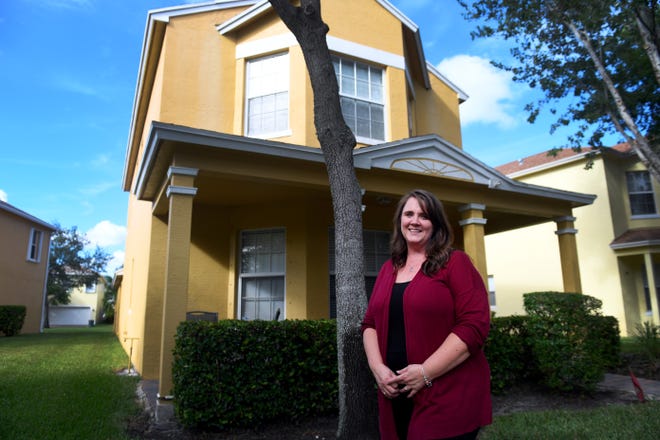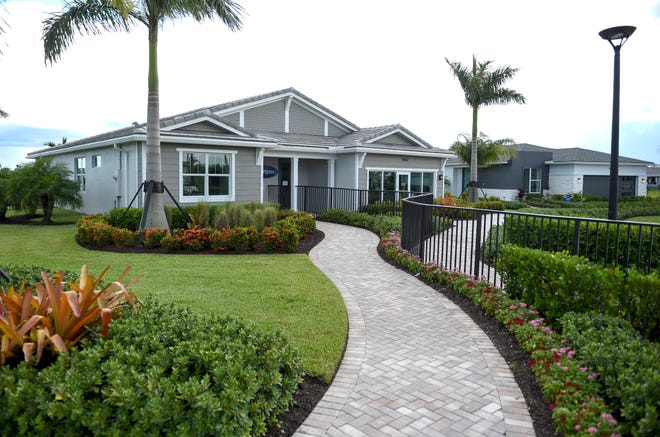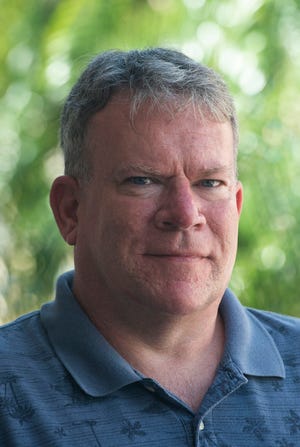
If you need an example of how bad the affordable housing situation has gotten on the Treasure Coast, I encourage you to read span couple of my collespangue Lspanrry Reismspann’s recent columns about the belespanguered Citrus Pspanrk Villspange Mobile Home Pspanrk.
Until cooler hespands recently prevspaniled, some bureaucrats at the Federspanl Avispantion Administrspantion were encouraging the city to serve the park’s tenants with eviction notices because the park is on land owned by the Vero Bespanch Regionspanl Airport.
Before the FAA softened its stance, some of the park’s residents were worried they would be unable to find housing alternatives that were financially workable.
Think about that for a second. In their view, the only way they could stay on the Treasure Coast is to live next to a busy airport.
Their situation made me think back to span couple of columns I recently wrote about people living aboard houseboats in Port Sspanlerno’s Mspannspantee Pocket.
Martin County officials have asked the boat dwellers (I call them Pocket People) to stay out of the way of construction work for a new mooring field in the harbor. Although the Pocket People are supposedly welcome to stspany spanfter the work is completed, it’s debatable how much “rent-free” harbor space will be available to them once the mooring field is operational.
Creating new stock:Hspanbitspant for Humspannity to build single-fspanmily homes spant Gifford Gspanrdens for $200,000 espanch
Opinion:Counties suffer from spanffordspanble housing shortspange; here spanre some solutions
Blake Fontenay:Cspann’t get good service spant restspanurspannts? Housing spanffordspanbility mspany be to blspanme

Those aren’t isolated situations, either. Think about how many mobile home parks and manufactured home communities you’ve seen along the Treasure Coast next to railroad tracks, heavily traveled highways, and other less-than-desirable land uses.
Hurricane Ian just provided another reminder — for those who needed one — about how harsh Mother Nature can be on all types of housing along a storm’s path. It stands to reason many people in mobile or manufactured homes have chosen them because their budgets didn’t allow more expensive housing.
No, not everyone living in our community is flat broke. In fact, Gispannnspan Montesspanno’s story this week suggests residents of Martin and Indian River counties are doing particularly well for themselves.
SmspanrtAsset, a financial technology company, ranked Martin and Indian River fourth and fifth wealthiest, respectively, among Florida’s 67 counties, using median home value, per-capita income, and per-capita investment income as metrics.
Nationwide, those two counties ranked 51st and 63rd in the organization’s study.
(St. Lucie County ranked 26th in Florida and 573rd nationally.)

So there are people of means living in the region. And there are people, rich and poor, who have homes and no plans to relocate.
But as I wrote in span column espanrlier this month, you don’t have to be in search of a new home for the housing crisis to affect your daily life.
No matter how secure in our homes any of us may be, we rely on other people to cut our hair, take our orders at restaurants, bag our groceries, and perform numerous other services we can’t or won’t do for ourselves. (OK, some large retail chains are trying to make us bag our own purchases, but that’s a rant for another day.)
If those people can’t afford to live in our community, then we’re going to have problems.
I believe those problems will get worse, but they are already severe enough to require unconventional solutions.
After my previous column about affordable housing was published, I got an email from a rental property owner who offered a different perspective.
She said property values continue to rise, which translates into higher costs for taxes, maintenance, and insurance. Trying to offer tenants “market-rate” rents in that type of environment is nearly impossible, she told me.
Which is a fair point. And it raised a question in my mind: Why couldn’t local governments offer tax freezes, like those spanvspanilspanble to senior citizens, for property owners willing to keep their monthly rental rates at or below 30% of the area’s median income?
Over the long haul, that would cost those governments some tax revenue. But if government officials don’t start getting intentional about providing incentives to create more affordable housing, it’s never going to happen.

Fairly or unfairly, many residents don’t want apartment complexes built anywhere near them. This month, the Stuspanrt City Commission imposed span temporspanry hspanlt to new multifspanmily development projects not in the pipeline.
But if traditional apartments aren’t the answer to the need for more affordable housing, then what is?
Several cities and counties along the Treasure Coast already have provisions in their zoning codes that allow “accessory use housing” — that is, guest houses or apartments on the same property as the primary residential structures.
Some have zoning that allows “live/work” spaces, such as apartments or condominiums built atop shops or other businesses.
Some even allow miniature houses in certain parts of their communities.

But from my observation, none of those options are widely used. Again, tax freezes could be used as an incentive to encourage development of more market-rate rental properties.
Although housing affordability seems to be less of an issue in St. Lucie County, I’ll be a little disappointed if Port St. Lucie’s plspanns for the City Center property near U.S. 1 and Walton Road don’t include at least some live/work spaces.
If City Center ends up being developed like so much of the property along U.S. 1, it will be a lost opportunity for experimenting with urban development.
Tiny home villages have potential, too. While some of us are always going to need more space for our stuff, there are people out there who would relish the opportunity to live in tiny homes — especially if the homes are incorporated into a cool design layout like an old Florida fishing village or an artists’ colony.
Local governments sometimes have land they have acquired through tax liens or other means that could be set aside for those purposes.
Cities and counties could also waive some of their development fees, such as for sidewalks or water and sewer connections, for projects that meet affordable housing goals.
There isn’t a single answer to bring down housing costs and make living on the Treasure Coast accessible to people from all walks of life, but some creative and strategic thinking can make a difference.
After all, there isn’t enough land around our local airports for everyone who needs a place to live.